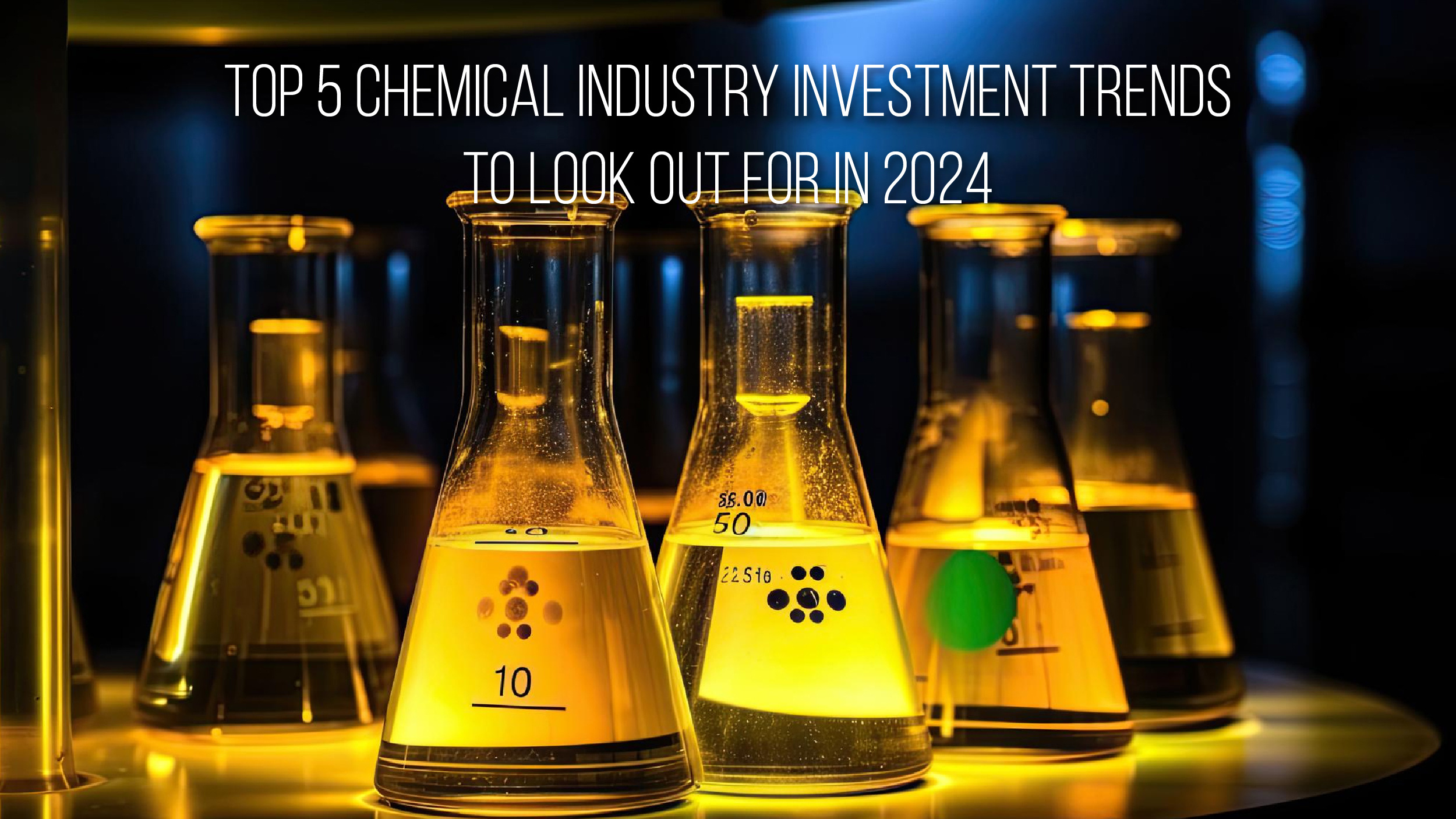The chemical industry is evolving with its primary emphasis on digitalization, decarbonization, and automation. Startups are incorporating diverse technologies to automate and enhance the sustainability of chemical manufacturing processes. The emerging chemical industry trends explained in this blog provide insights into the trajectory of innovation for the coming years.
Sustainability, digital transformation, regulatory shifts, and emerging markets are shaping the chemical sector. Adapting to these trends will enable businesses to strategically position themselves and capitalize on evolving industry opportunities in the upcoming period. Without further ado, let’s dive in.
Top 5 Chemical Industry Investment Trends to Look Out for in 2024

Let’s have a look at the top investment trends that are reshaping the chemical industry.
1. Energy Demand
The surge in chemical demand is propelled by the ongoing energy transition, which has triggered increased manufacturing activity relying on chemicals and materials. Recent governmental policies and incentives, notably the Infrastructure Investment and Jobs Act (IIJA) enacted in late 2021, have catalyzed investments in the energy transition. This legislation allocated over US$70 billion to bolster electric vehicle (EV) infrastructure and clean energy transmission.
Furthermore, in the summer of 2022, Congress passed the Creating Helpful Incentives to Produce Semiconductors (CHIPS) and Science Act, along with the Inflation Reduction Act (IRA), injecting an additional US$469 billion into various sectors. This funding encompasses tax incentives and financial support for domestically manufactured semiconductors, lithium-ion batteries, solar panels, and other clean energy technologies. Additionally, it encompasses the essential components and material inputs for these products.
Although the overall demand for chemicals exhibited softness in 2023, the anticipation is that demand for chemicals and materials crucial to supporting the energy transition will witness an upswing in 2024 and beyond. This projected increase is attributed to the enduring impact of these policies rippling through the economy.
2. Dynamic Investment Structure Globally
With global supply chain disruption and shifting geopolitics, industrial investment is shifting as well, driven by automation trends.
Recently, AI software developers and service firms focusing on proprietary drug research have achieved noteworthy advancements. For instance, in November 2021, Insilico Medicine utilized AI to identify a novel therapeutic target and develop an experimental small-molecule treatment for idiopathic pulmonary fibrosis. The company secured $255 million in venture capital funding.
The strong rebound in the global economy was reflected in the record levels of deal-making in 2021 across all three regions. With a 34% increase in deal volumes over the previous year, Europe, the Middle East, and Africa (EMEA) took the lead, followed by the Americas with 22% and Asia-Pacific with 17% according to PwC analysis.
3. Internet of Things (IoT) Solutions
Investment opportunities in the chemical industry are fueled by IoT (Internet of Things) technology, which enables advancements in areas such as advanced materials development, efficiency improvements, renewable energy investment, logistics optimization, cybersecurity, smart factories, and emerging technologies. With constant equipment monitoring, predictive maintenance, and supply chain optimization, IoT provides avenues for growth, innovation, and sustainability within the chemical industry, making it an attractive investment prospect.
4. Supply Chain Impacts
The rise of onshoring, nearshoring, and friendshoring is notable as supply chain disruptions, heightened by the COVID-19 pandemic and the Russia-Ukraine war, prompt a shift. Decarbonization pressure is further driving the trend toward localized supply chains, enhancing the economics of bio-based and recycled feedstocks. This approach not only improves efficiency but also curtails supply chain emissions by minimizing long-haul transport. Friendshoring, seen in recent deals like the Australian and US company merger securing a lithium supply chain, aims to mitigate geopolitical risks.
5. AI & Digital Technology
In the realm of the chemical industry, the significance of digital and artificial intelligence (AI) technologies cannot be overstated. Data is now emerging as a crucial raw material for fostering innovation and achieving operational excellence. While the chemical industry has been engaged in digitalizing operations for several decades, the recent acceleration of this digital transformation is prompting companies to adopt a comprehensive digital approach to maintain a competitive edge. The focus has shifted from addressing specific use cases in isolation to a more holistic integration of systems across operations and businesses. This digital integration is proving beneficial, leading to heightened productivity, faster innovation, enhanced decision-making processes, and more robust customer relationships. Some prominent chemical companies in the United States include Westlake Chemical, Dow Chemical Company, Celanese, A. Schulman, and Access Industries.
Winding Up
In the dynamic landscape of the chemical industry, staying abreast of the latest innovations is paramount. Traditional businesses that resist adaptation risk losing market share. The intersection of the aforementioned trends serves as a roadmap for corporations, guiding them in formulating strategies tailored to industry demands. The influx of new players, addressing specific customer demands, further intensifies competition, urging businesses to evolve with the evolving market.




